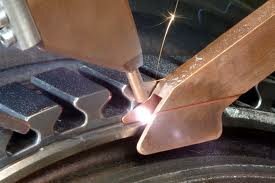 In the past few years, there has been a lot of talk about additive manufacturing—especially with the creation of 3D printing that allows companies to make three-dimensional solid objects of virtually any shape.
In the past few years, there has been a lot of talk about additive manufacturing—especially with the creation of 3D printing that allows companies to make three-dimensional solid objects of virtually any shape.
But more and more recently, the idea of laser additive manufacturing (LAM) has been taking off. Laser additive manufacturing has been used for a range of developments, from helicopter components to replacement knee and hip joints.
Earlier this month, the UK’s hosted a that held presentations covering techniques, problem solving, and commercialization of LAM.
Speakers from around the world came to speak on behalf of their companies and their use of additive manufacturing and laser additive manufacturing.
Presenters all agree on one thing, though–it is hard to convince clients that products built with AM or LAM are reliable.
In , the sixth annual Laser Additive Manufacturing Workshop opened in Houston, Texas. The takeaway from this workshop is the effort to “fund AM research and expand AM capabilities.”
These workshops and conferences around the world that bring together big name companies are building up additive manufacturing and laser additive manufacturing to become more household names. ( hoped that LAM 2014 would “have a significant impact on the widespread industrial implementations of laser additive manufacturing.”)
When asked about the most important aspect of laser additive manufacturing, Stéphane Abed, CEO of Poly-Shape, , “the most important aspect of LAM lies in the tremendous opportunity it offers for designing differently.”
The freedom of a designer is one of the most important details in any kind of manufacturing because it gives the designer the chance to create stronger and lighter products compared to those others that are conventionally manufactured.
But like everything, there are a few limitations of laser additive manufacturing. To start, LAM does not have the ability to mass-produce quite yet. , “For some smaller parts, it is possible to achieve production of the order of ten thousand units per year but less for larger items.”
Fortunately, even with this limitation, laser additive manufacturing has allowed manufacturers to achieve designs of products that have not been made by already established manufacturers.
So as more companies begin to invest in laser additive manufacturing and LAM begins to expand globally, there is no doubt that LAM will add an interesting element to traditional methods of manufacturing.
From helicopter engines to knee implants to LAM is looking to create technology and products that seem more 21st century than anything else we’ve seen.
—
Photo credit:
 Official Nebraska Government Website
Official Nebraska Government Website
